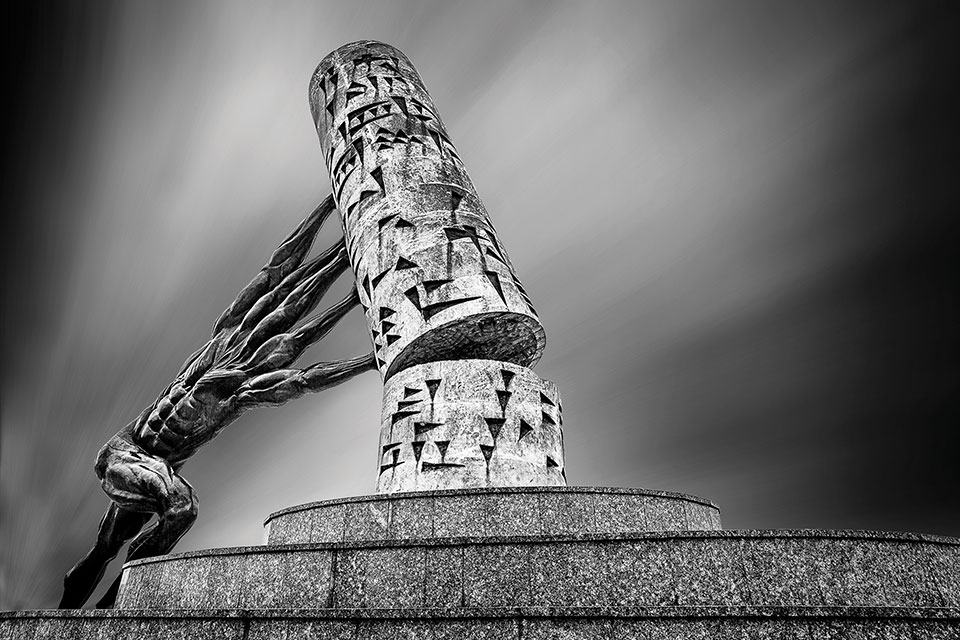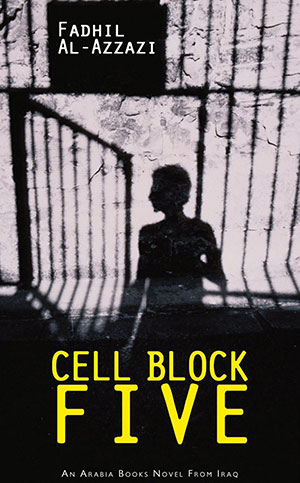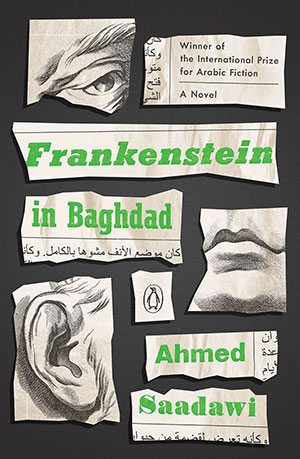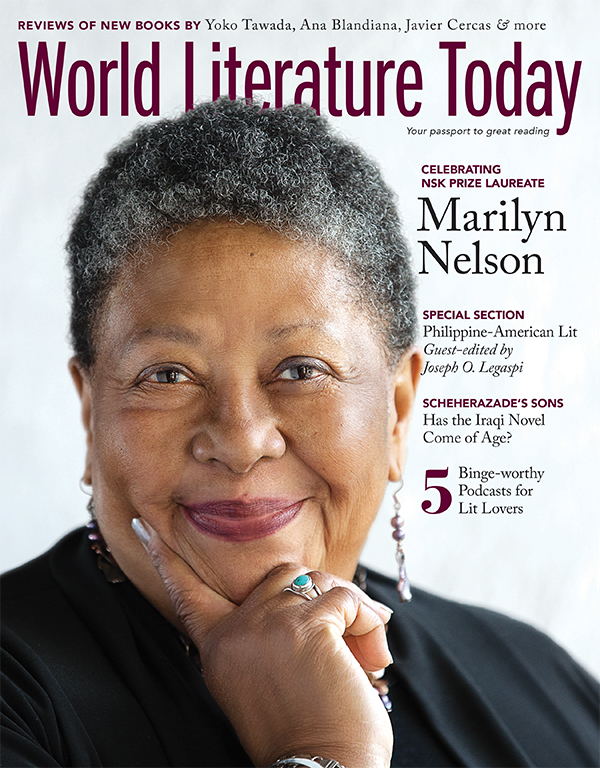The Return of Scheherazade, or the Rise of the Iraqi Novel after 2003

The novel has become the leading hero in the drama of literary development in our time precisely because it best of all reflects the tendencies of a new world still in the making; it is, after all, the only genre born of this new world and in total affinity with it. – Mikhail Bakhtin, The Dialogic Imagination
In spite of the long narrative history in Iraq, which dates back to five millennia of narrative tradition that included myths, fables, tales, biographies, religious stories, animal allegories, magamas, and various other folkloric and oral narrative forms, the Iraqi novel, as a distinct genre, ushered its real beginning in the mid-1960s. Critics and literary historians, however, differ in this regard. Some see the real history of the Iraqi novel as a continuation of that long tradition that ultimately reached its maturity in the 1960s; others see the novel as a new genre in Arab and Iraqi literatures that came into existence primarily under the influence of the Western novel. Both views have their cogent arguments, and both have their pitfalls, too.
In all cases, the first narrative works that were published as novels in Iraq date back to the 1920s with the works of Mahmud Ahmad al-Sayyid (1903–37), who wrote For the Sake of Marriage (1921), The Fate of the Weak (1922), The Calamities (1922), and his more mature novel, Khalid Jalal (1927). In fact, this last novel was seen by some critics as the best and, perhaps, the first novel by al-Sayyid. Nonetheless, al-Sayyid’s entire output was criticized as mainly ideological and lacking in theme and structure. Some even see Khalid Jalal as a long story rather than a novel: a recent republication showed that it is no more than 103 pages in size.
The Iraqi novel needed to wait till 1966 to witness its real beginning with the publication of Ghaib Tu‘ma Farman’s The Palm Tree and the Neighbors. In the forty years between 1927 and 1966, very few significant novelistic works were published: Two Mad Men (1939), by Abdul Haq Fadhil; Doctor Ibrahim (1939), by Thinoon Ayoob; The Hand, the Earth and the Water (1948), by Thinoon Ayoob; In the Jinn’s Villages (1948), by Ja’far al-Khalili; and The End of a Love Story (1949), by Abdulalla Niyazi. The 1950s witnessed a boom in the short story at the hands of Abdulmalik Noori and Fouad al-Tikerly, yet no significant novel was published during that decade.
Women narrative writers of that period struggled to find a footing in a predominantly patriarchal literary scene. Harbeya Mohammed published Who’s the Culprit? in 1954, and Layla Abdul Kadir published Nadia in 1957. Other women narrative writers of that time included Amna Hayder al-Sadr, Maeda al-Rubayee, and Sameera al-Daraji. All their works, however, were classified as long stories, not novels.
For decades many in Arab literary circles reiterated the dictum, “Poetry begins in Iraq, but it ends in Egypt; the novel begins in Egypt, but it ends in Iraq.”
Given that situation, one must not forget a historical fact that Iraq conceives itself as a country of poetry, not the novel. Poets in Iraq are glorified in a remarkable way. In fact, the kings and rulers of this land were rewarding poets lavishly throughout history, not prose writers. The narrative arts were seen as inferior. “If one fails to be a poet, she resorts to story writing,” goes a maxim among Iraqi literary circles. Although the conditions that led to the rise of the novel as genre in other Arab countries—mainly Egypt, Syria, and Lebanon—were not different from the conditions that led to the rise of the novel in Iraq, Iraq continued to be conceived as a country of poetry, not the novel, even among Arab readership.
After all, it was primarily in Iraq that the main modern and modernist movements in twentieth-century Arab poetry started and then swept all other Arab countries. Therefore, for decades many in Arab literary circles reiterated the dictum, “Poetry begins in Iraq, but it ends in Egypt; the novel begins in Egypt, but it ends in Iraq,” a sweeping generalization put forth in an attempt to understand the flourishing of poetry in Iraq, not the novel. It was Ghaib Tu‘ma Farman’s The Palm Tree and the Neighbors, then, that established the novel as a distinct genre in Iraqi literature. Farman laid the foundation for the well-structured, realistic novelistic writing in Iraq followed by many other novelists. Shakir Khisbak wrote Black Malice in 1966; Abdul Razaq al-Mutalibi wrote The Thirsty in 1967; Farman wrote his second novel, Five Voices, in 1967; and Fadhil al-Azzawi wrote The Beautiful Creatures of Fadhil al-Azzawi in 1969. Consequently, the Iraqi novel’s journey began.
The Hard Beginning: The Novel under Dictatorship
Unfortunately, however, the birth of the Iraqi novel coincided with the rise of military dictatorship in the country. In 1958 Iraq became a republic when a military coup toppled the monarchy in the country. By 1966 the country had already reached what one may call the second republic with the rise of the Baathists to power for the first time in 1963. Their bloody, short-lived rule would soon be replaced by another coup until this period culminated its achievements by the rise of the Baathists to power again in another coup in 1968.
The period between 1968 and 1980 witnessed the emasculation of an entire society and the domestication of its writers.
The Baathists feared nothing more than free speech. Hence, the first thing they did when they held power after 1968 was to legislate what they called the Iraqi Publication Law or law number 206. That law made it impossible to write anything that contradicted the dominant ideology of their regime or its representatives. It prohibited, for instance, any criticism of the president, the members of the so-called revolutionary command council, and any official body affiliated to both of them. It also prohibited any criticism of “the revolution and its ideology and the Republic and its institutions, and the propagation of ideas or actions that carry on propaganda for imperialism, separatism, reactionism, regionalism, Zionism, Nazism, and aim at destabilizing the [country’s] internal and external security.” It further prohibited any “violation” of what it termed as “the general and individual morality.”
Evidently that law gave free rein to the thought police to ban anything and, indeed, everything that did not chant hymns in praise of the regime and its erratic political agenda. Writing became very much like playing Russian roulette. The-Big-Brother-Is-Watching-You policy overshadowed the entire literary scene and made it impossible for the novel to reach its full potential. Many writers, voluntarily or involuntarily, left the country in search of freer places. Others decided to stay in the country but opted for silence or writings that sought refuge in mythology or distant historical events. In other words, the novelists of that period wrote novels that refrained from touching upon the problems of the people and the bitter realities of the situation under dictatorship and its absurdities and obscenities.
Indeed, the period between 1968 and 1980 witnessed the emasculation of an entire society and the domestication of its writers. Law number 200, issued by the Baath regime, was intent on Baathifying an entire society as it prohibited any political activity outside the Baath party; indeed, execution, as that law made clear, was the punishment for anyone who joined any other political party. Therefore, no memorable or significant novel was produced in the scanty output of that period inside the country.
 The exile novel, naturally, took a different course because its writers found themselves in free societies. It found the right conditions to tackle subjects considered taboo inside the country. The gap between the two remains wide even today. The most important novels of this period are Fadhil al-Azzawi’s Cell Block Five (1972), Abdul Rahman Majeed al-Rubaie’s The Tattoo (1972), Ghaib Tu‘ma Farman’s The Travail (1974) and The Sacrifice (1975), and Fuad al-Takarli’s The Long Way Back (1980). Evidently, it was Farman (1927–90) who contributed greatly to the artistic advancement of the Iraqi novel and its rise as a distinct genre in twentieth-century Iraqi literature. Still, he published all his novels in exile while living in Moscow.
The exile novel, naturally, took a different course because its writers found themselves in free societies. It found the right conditions to tackle subjects considered taboo inside the country. The gap between the two remains wide even today. The most important novels of this period are Fadhil al-Azzawi’s Cell Block Five (1972), Abdul Rahman Majeed al-Rubaie’s The Tattoo (1972), Ghaib Tu‘ma Farman’s The Travail (1974) and The Sacrifice (1975), and Fuad al-Takarli’s The Long Way Back (1980). Evidently, it was Farman (1927–90) who contributed greatly to the artistic advancement of the Iraqi novel and its rise as a distinct genre in twentieth-century Iraqi literature. Still, he published all his novels in exile while living in Moscow.
Ash Tragedy: The War Novel
The Iraqi novel in the period between 1980 and 2003 can generally be described as a war novel. This period witnessed two disastrous wars: the Iraq-Iran War of 1980–88 and the Gulf War of 1990–91. These wars were, then, followed by a long period of international sanctions against Iraq that lasted from 1991 until 2003 and amounted to an almost total financial and trade embargo on the country. These wars left their marks on all aspects of life, especially literature, and the regime spared no efforts to devote all the country’s resources for these meaningless wars. “Everything for the Battle” was the motto that the regime raised in that period.
Consequently, an entire generation of writers was brought up in a war zone. It breathed its smoke, relished the blood it spilled, glorified its brutality, and, literally, was schooled in its trenches. “The battlefront,” says the novelist Abdul Sattar Nasir, “became a school for this generation . . . alright I said to myself: Yes, it is the school.” No wonder, then, if he writes, “the blood is spilling and the bodies are still (fresh and delicious) for the crows and the insects and the earthworms” when he describes the dead bodies of the Iranian soldiers in his story “At the Trench Night.” “I want to see them dead,” writes Ali Lafta Said in his story “The Missiles’ Rain.” “I want to kill them; I want to see how they struggle for their lives.” “I spent a whole night searching for someone to capture,” writes Ahmed Khalaf in his Borderline; “and when I captured one, I immediately struck him once with the gunstock at the back of his head and he immediately fell to the ground.”
An entire generation of writers was brought up in a war zone. It breathed its smoke, relished the blood it spilled, glorified its brutality, and, literally, was schooled in its trenches.
The narratives of that period were infected with this sort of sadism, this strange portrayal of scenes of killings and murders and fake patriotism. The regime sponsored, the regime glorified, and the regime lavishly awarded this type of writing because it was used as a weapon to propagate its wars. That is why the regime’s cultural apparatus called novels of this period “the novels of Saddam’s Qadisiyyah” in reference to a historic battle between the Arabs and the Persians.
Generally, these narratives lack any artistic merit but constitute a scar in the body of Iraqi literature that prevented the Iraqi novel from maturing to its full potential. No real questionings of the causes of war were tackled, no real treatments of its costs to the country or the people were ever mentioned. The war was also present in much of what was written in exile as many of its novelists served in the Iraq army during these wars and then left the country. The quality of these novels was different; the treatment of the war was much better and more realistic. Unfortunately, however, very few could reach the country or be available to the public inside the country.
This period, ironically, culminates in the dictator declaring himself a novelist, thus preoccupying the literary scene in the country and, probably, abroad for a long time in writing critical appreciations of his garbage. Saddam Hussein wrote four “novels”: Zabiba and the King (2000), The Fortified Castle (2001), Men and the City (2002), and Begone, Demons (2003).
The New Beginning after 2003
After more than three decades of dictatorship, wars, and international sanctions, the Baath regime led the country to destruction and occupation. The country was finally freed from one of the worst dictatorships in human history; unfortunately, however, the means were ugly and the price was costly. All dreams of peace, progress, and prosperity would soon be shattered by a new cycle of terrorist violence and civil sectarian war. The ill-planned occupation and the naïveté of some of its administrators opened a Pandora’s box, and all the evils of the world flew out.
After 2003 the system of taboos established by the dictatorship was finally removed. Sex, politics, and religion, which formed the unholy trinity of the old state’s censorship, stopped being taboos.
The nascent democracy that ensued as a result, nonetheless, demolished all systems of censorship under dictatorship. For the first time, novelists found themselves free to write about whatever they liked without any fear of being persecuted by the state apparatus. Hundreds of novels were written between 2003 and 2017. It is estimated that this period witnessed the writing of more than 850 novels, more than the number published in the entire history of the Iraqi novel. The system of taboos established by the dictatorship was finally removed. Sex, politics, and religion, which formed the unholy trinity of the old state’s censorship, stopped being taboos.
In the beginning, naturally, the clerks of the old state, who remained in their places in the Ministry of Culture after the change, insisted on playing their old game of being more royalist than the king and more Catholic than the pope to embarrass the new cultural regime. The self-appointed censor at the Department of Cultural Affairs, for instance, refused to publish a novel by the Iraqi novelist Mohammed Sa’adoon al-Sibahi because he unfairly deemed it “inappropriate” as it “provoked certain societal sensitivities,” in his view. In fact, the novel only partly criticized the situation in some Iraqi universities after 2003. Another novel by Salam Ibrahim was also rejected because of what that censor described as its “erotic nature.” Fortunately, this type of vestigial censorship did not represent a general trend. It died away quickly when the manager of the department who resurrected it was kicked out of office.
The flow of novels took the country that for centuries prided itself on being a land of poetry only by surprise. The gravity of the security situation in the country, the civil sectarian war, the daily terrorist attacks, and the unprecedented levels of violence that ravaged the streets of major cities required a genre that has its feet on the ground more than poetry. Thus, the novel dominated the literary scene for the first time in the history of the country. Furthermore, the serious conditions of the country reinforced the realistic trend in the new novel writing. Novelists sought either to dig deep into the real reasons that led the country to its present conditions—i.e., focus on all events that preceded 2003—or to treat the present moment by looking into the causes of the new waves of violence that swept the country and caused the massacre and displacement of hundreds of thousands of its citizens.
“All novels were more close to the truth than fiction, but the truth became a kind of fiction in the Kingdom of Hell,” says novelist Haitham al-Shewaili at the inception of his novel The Compass of the Day of Judgment, a novel that explores events that preceded 2003 and led the country to its present conditions. In The Triangle of Death, a novel by Ali Lafta Said, the narrative explores the causes of sectarian violence and comes to the conclusion that “violence is a national industry” made only possible by a triangle of death composed of the ruling class, the Shi’a, and the Sunnis. “Armies stretch as long as the eyes can see, made of crafty men from the tribes of Aws and Khazraj, standing before the door of my sleep, banging it with their swords: the army of the throne, the army of heaven, the army of slaughterers, the army of informers, the army of assassins, the army of caliphs, the army of allies, and the army of the gross,” says Naseef Falak in his novel Qiyamaut. The novel meticulously studies the daily sectarian violence and its political and religious causes.
 Ahmed Saadawi, in Frankenstein in Baghdad, portrays a horrid picture of the reality of violence and its victims in the country after 2003. The main character, Hadi al-Attag, a scrap dealer from Bataween, a neighborhood in central Baghdad, collects the body parts of the victims of terrorist attacks and stitches them together. The main aim, as Hadi claims, is to make the government acknowledge that these parts belong to real persons who deserve proper burials. The result is a monster that immediately rises and goes on a rampage of revenge against all the killers of the owners of the parts. “I am the answer to the calls of all the wretched. I am a savior, a waited for one, a desired one, an anticipated one of some sort. The hidden levers that became rusty due to lack of use have, ultimately, become activated. They are the levers of a law that seldom wakes up. The prayers of all the victims and their families have all gathered at once and pushed, by their roaring momentum, those hidden levers so I was activated, and from the bowels of darkness I was born. I am the answer to their calls to redress injustice and take revenge on all culprits.” This monster, the novel reveals, survives on human flesh and, although shot, cannot be eliminated.
Ahmed Saadawi, in Frankenstein in Baghdad, portrays a horrid picture of the reality of violence and its victims in the country after 2003. The main character, Hadi al-Attag, a scrap dealer from Bataween, a neighborhood in central Baghdad, collects the body parts of the victims of terrorist attacks and stitches them together. The main aim, as Hadi claims, is to make the government acknowledge that these parts belong to real persons who deserve proper burials. The result is a monster that immediately rises and goes on a rampage of revenge against all the killers of the owners of the parts. “I am the answer to the calls of all the wretched. I am a savior, a waited for one, a desired one, an anticipated one of some sort. The hidden levers that became rusty due to lack of use have, ultimately, become activated. They are the levers of a law that seldom wakes up. The prayers of all the victims and their families have all gathered at once and pushed, by their roaring momentum, those hidden levers so I was activated, and from the bowels of darkness I was born. I am the answer to their calls to redress injustice and take revenge on all culprits.” This monster, the novel reveals, survives on human flesh and, although shot, cannot be eliminated.
Frankenstein in Baghdad was awarded the International Prize for Arabic Fiction (IPAF award) in 2014. The awarding committee wrote the following in its final report upon the selection of the novel for the prize: “The novel was selected for the prize due to . . . the creativity in the narrative structure, especially in the portrayal of the character of al-Shesma [the main character]. This character sums up a type and a level of violence that has infected Iraq, the Arab countries, and, indeed, the whole world in recent days. It also contains various levels of well-written, multifaceted narrative. For this and many other reasons, it constitutes an important contribution to contemporary Arab novelistic writing.” The novel was translated into English, French, Persian, Italian, Spanish, Turkish, and even Bosnian.
The Iraqi novel, then, has reached maturity and, ultimately, secured an important place on the literary map both nationally and internationally.
Baghdad











